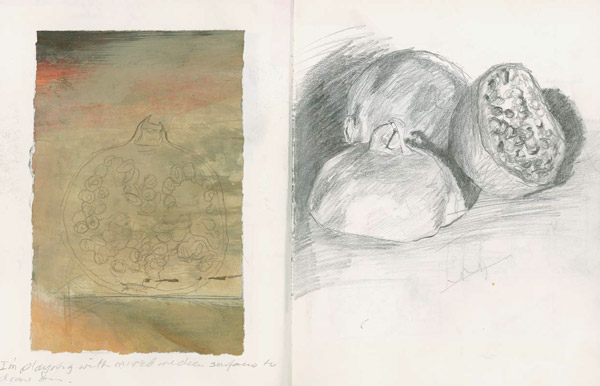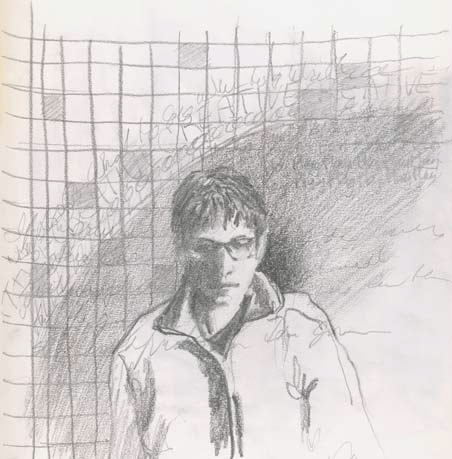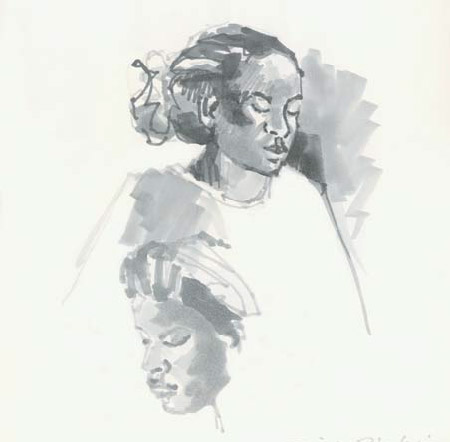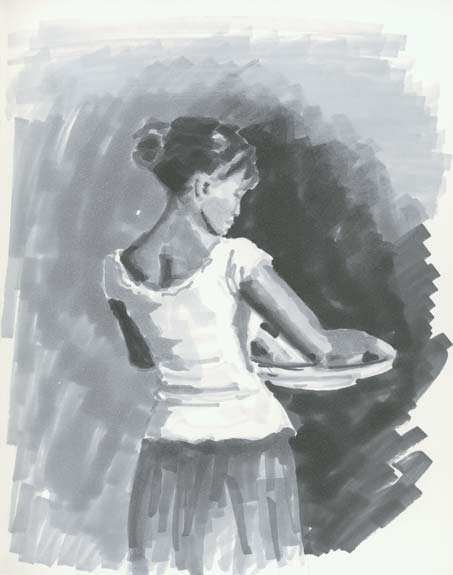
The subjects of Pederson's portraits are based on people she has met or who have impacted her, often reflecting different walks of life as well as diverse cultural and religious backgrounds. A painter for more than twenty years, she was the first recipient of the Federation of Canadian Artists' Early Achievement Award in 2005, and her work appears in the Royal Collection in Windsor, England, among many other collections. The author of EXPRESSIVE PORTRAITS: CREATIVE METHODS FOR PAINTING PEOPLE, Pederson continually explores new avenues of expression by adding mixed media to her watercolors and elements of abstraction to her works.

The time you put into sketching comes back to you within a painting whether you are aware of it or not.

Sketching is a great way to work out ideas, doodle, journal or capture a place and time. I like to use felt pens of different values and pencils. At home I may include painting and collage or anything close by. I find that sketching is really personal. I don't tend to share sketchbooks with a lot of people; it's like a diary — a safe place to explore yourself.
I seem to sketch in fits and bursts! I will be really dedicated for a time and then a change in schedule or a deadline will throw me off for a while. When I travel, I always take a sketchbook and try to do some sketches while I am away. I like to sketch on trips to keep my memory fresh for the place or feeling that I experienced. I like to try new things and may use my sketchbook to explore and give myself permission to succeed or fail. It is freedom to be fearless. Sketching has taught me that you can make changes, take chances and start a new book when the old one is full.







Sketching really helps your painting and your hand-eye coordination. As well, I think that sketching provides you with an opportunity to try and work out ideas and compositions so that when you go to the easel, you already have something in mind as a springboard.
I was doing a demo the other day and one of my students said, “Have you just gone into the zone?” I felt it myself — that endorphin-laced creative zone where time stands still and you don't really think, you just do. Whether painting or sketching, I am concentrating on the image and I feel very relaxed. If I go into the creative zone, I think that there is a bit of a high attached to it — kind of like a runner's high if you have ever trained for distance running. On the flip side, if things are not going well, I may want to rip the page out. I try to leave the pages in, though, because I learn from my failed attempts.
I believe sketching affects how we see the world, but how depends on what your intentions are. If you are trying to re-create something from life, then it teaches you to see relationships between shapes, values and colors. If you are trying to capture the feeling or essence of a place, then you are not concerned so much with re-creating as capturing an emotion or atmosphere or gesture. One involves analyzing, and the other, feeling.
Sketching is a time to play, but that doesn't mean that you don't work.
The sketch may or may not be beautiful; for me, it's (usually) never meant for framing or display (until now!). Finished work for galleries has to be polished to a certain level, but a sketch can be whatever you want it to be.
Your past experience helps to shape your future actions. The time you put into sketching comes back to you within a painting whether you are aware of it or not. Your sketching time is time well spent.
